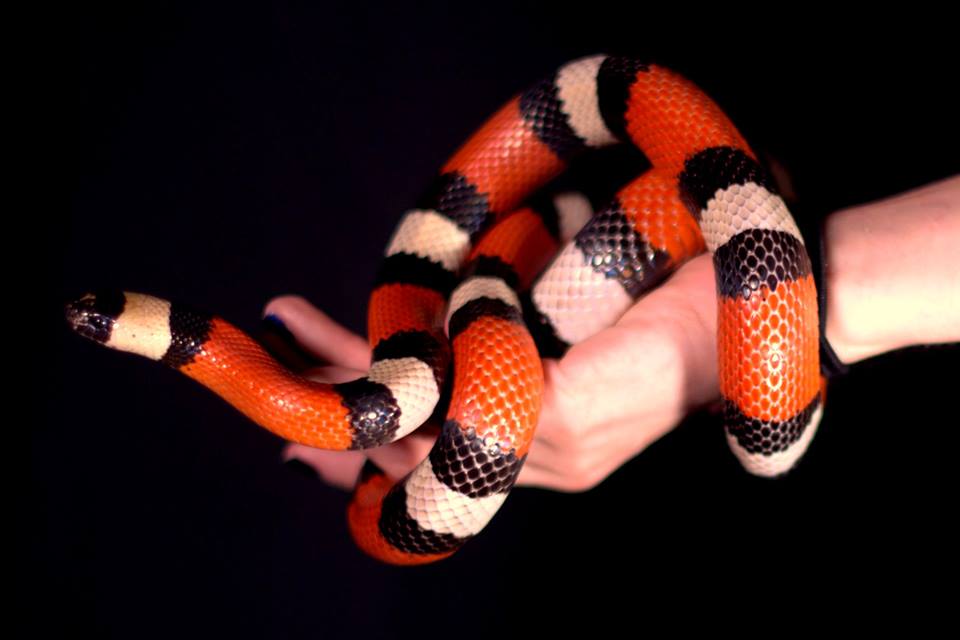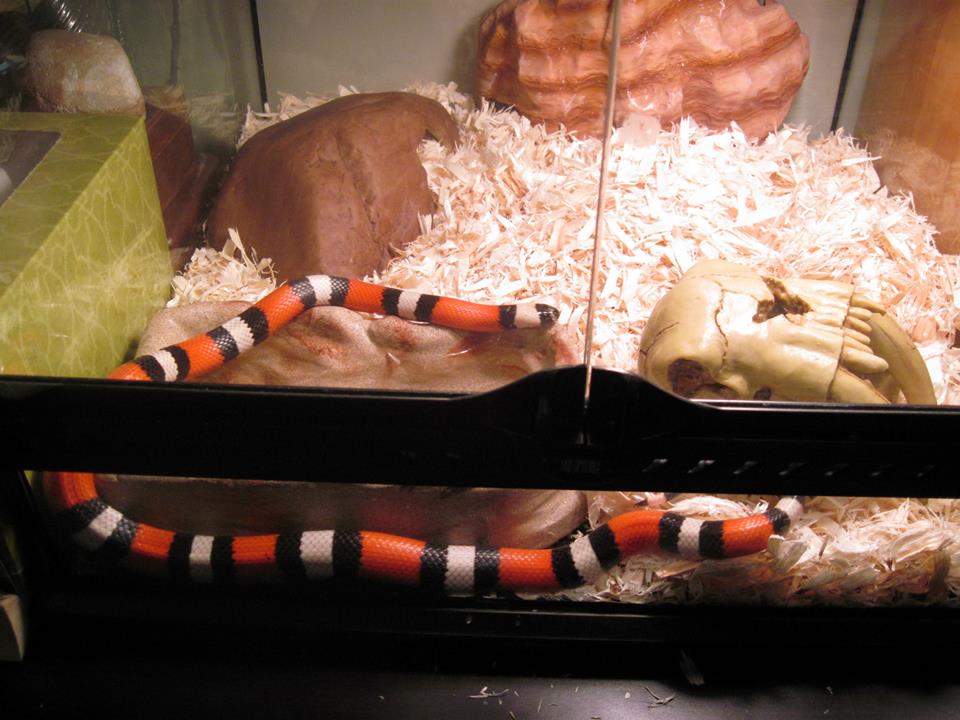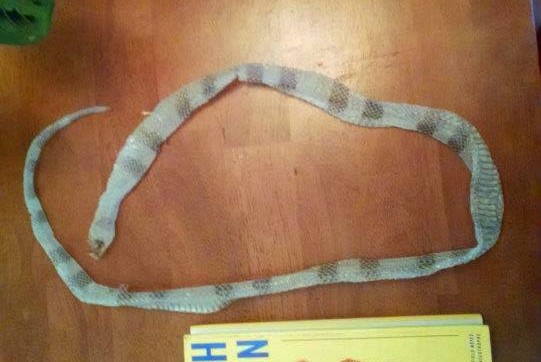It is thought that Milk Snakes received their name because farmers often found them in barns. While they were not after the cow's milk, they might have been searching for mice and other small prey items. Milk snakes are an excellent example of Batesian mimicry as their striking color pattern resembles that of the venomous coral snake. Batesian mimicry was named for Henry Walter Bates who completed his work on butterflies in Brazil. While these buttterflies were harmless, they tricked predators by mimicking color patterns of more dangerous species. The Pueblan Milk Snake is a smaller species of snake that can be found in certain regions of Mexico. They are crepuscular, meaning that they are most active at dawn and dusk. They prefer small hiding spaces and have a reputation for being easily scared (compared to the more common corn snake in the pet trade). These snakes do not tend to bite. Their preferred defense is musking, which involves releasing a smelly liquid from their cloaca. Quick Overview
Pueblan Milks Snakes are a good snake for beginners as they do not have complicated humidity requirements, nor do they require much space. Adult snakes will be about the same girth as an adult corn snake, but may be significantly shorter in length. Like most snakes, they are escape artists so an enclosure with a locking mechanism is recommended. In the wild, most Pueblan Milk Snakes have red, white, and black bands of color. In the pet trade, other color mutations have been selected through breeding. A common coloration includes apricot or orange coloring on what would normally be the white bands. It is important to provide appropriate sized meals for your milk snake on a regular basis. A general rule of thumb is using prey that is 1.5 times the girth of the snake at its thickest point. Here at Ferrets and Friends, we feed our adult snake, Natasha, one adult mouse every two weeks. Milks snakes can live for more than twenty years. They are a long term commitment that many people do not consider when they purchase them. Finding a new home for an unwanted pet can be challenging, but it is important not to release them into the wild for their own safety and the health of the ecosystem. Instead, find a reptile rescue in your area or ask friends and family if they know of any one who might be interested in finding a new home for your pet. Animal Care Cost Example (2018 Prices): Set Up
Animal Care Cost Example (2018 Prices): Annual Cost
1 Comment
|
About the blogFerrets and Friends, LLC has four writers bringing you information on a variety of topics from pets to wildlife, education to conservation, and from new developments in our business to information about our industry. Learn something new each week! Archives
August 2020
Categories
All
|



 RSS Feed
RSS Feed